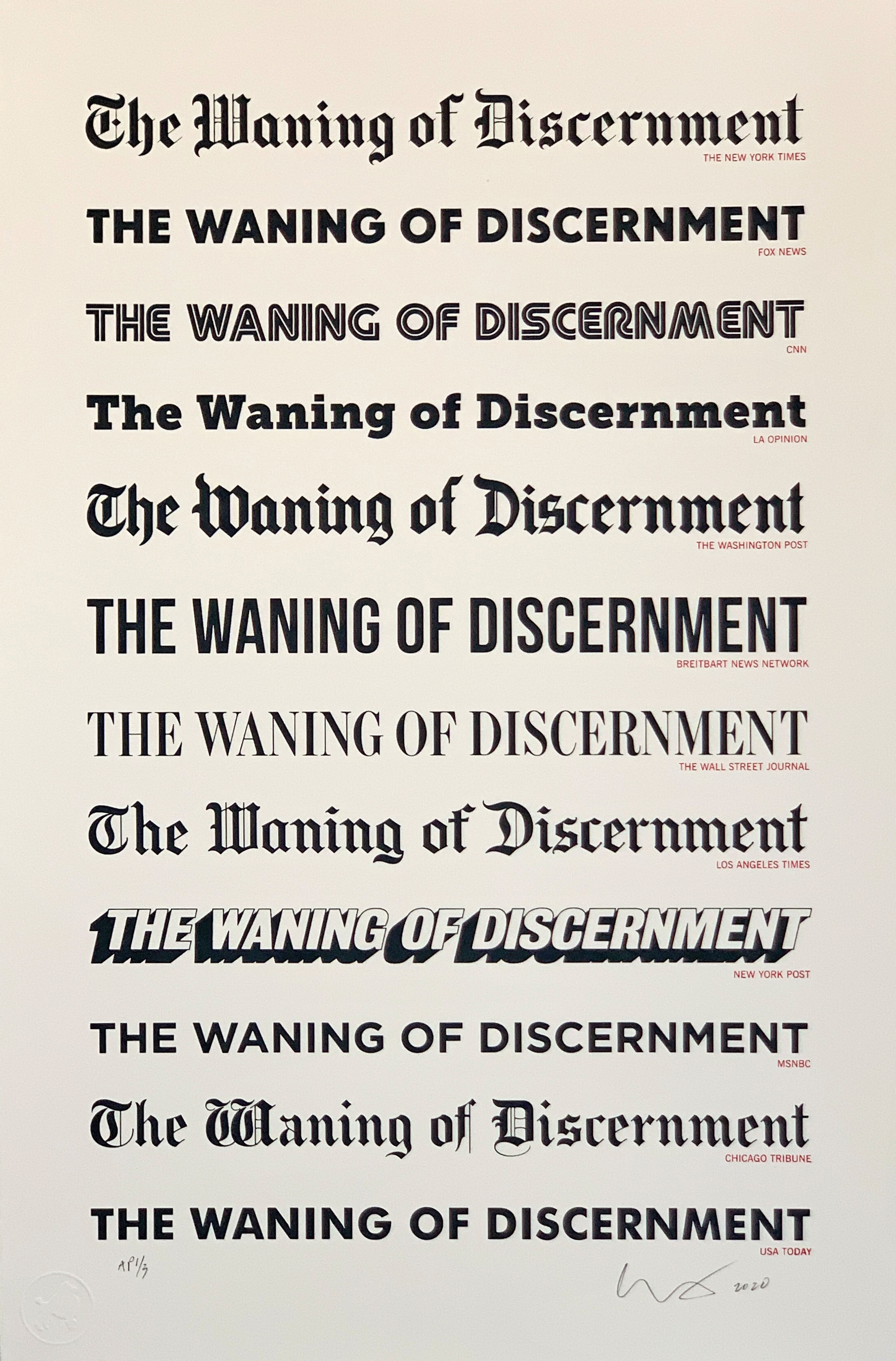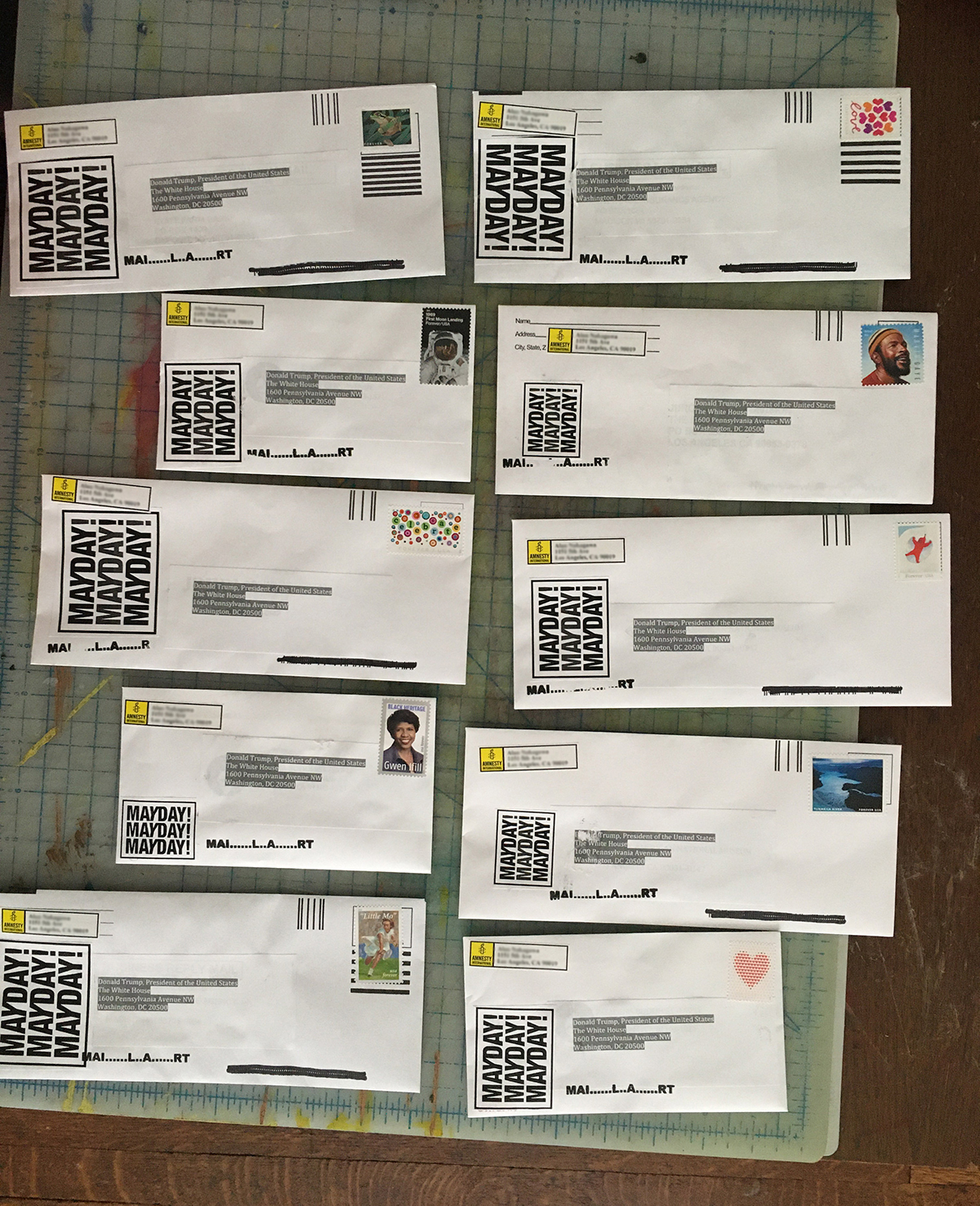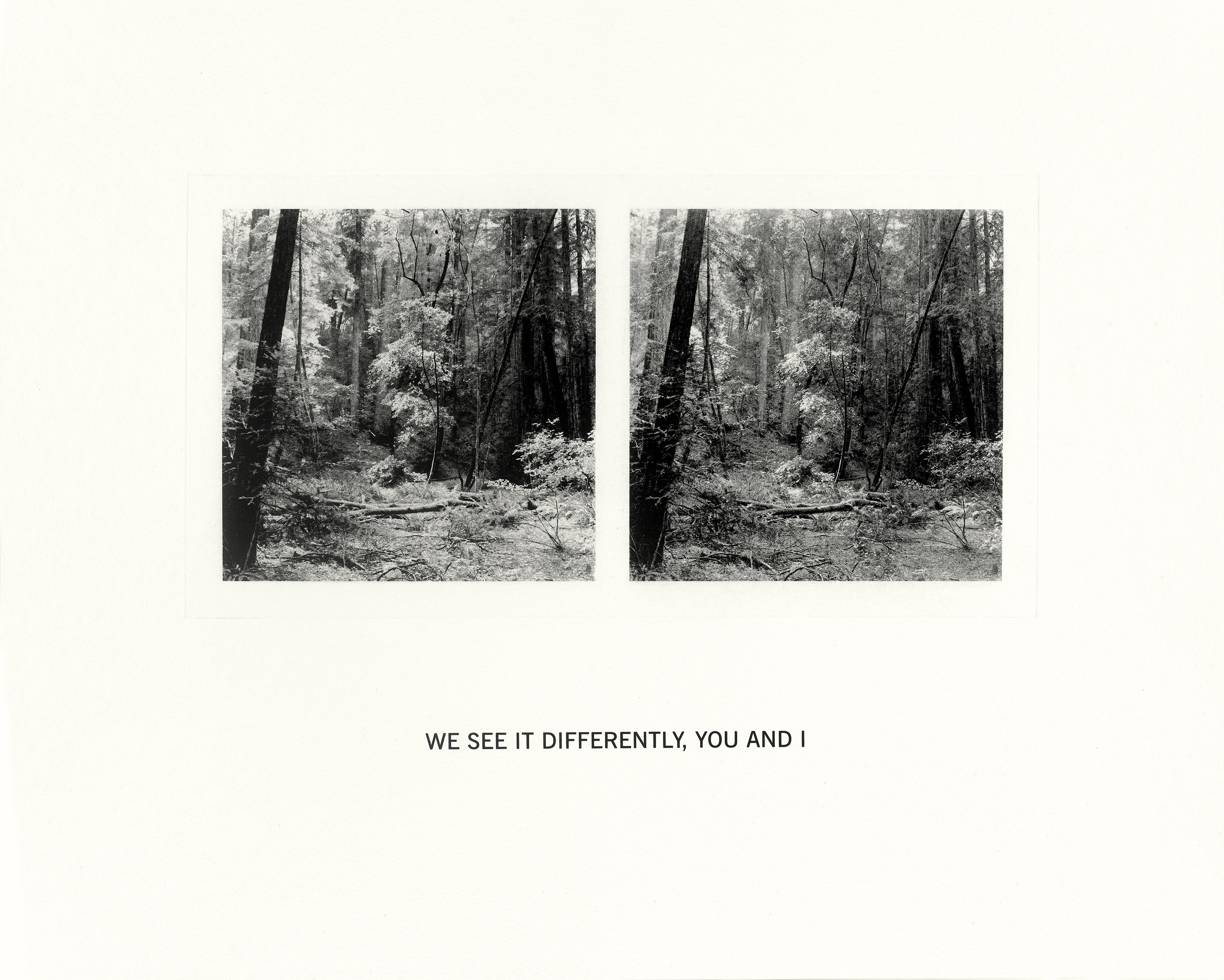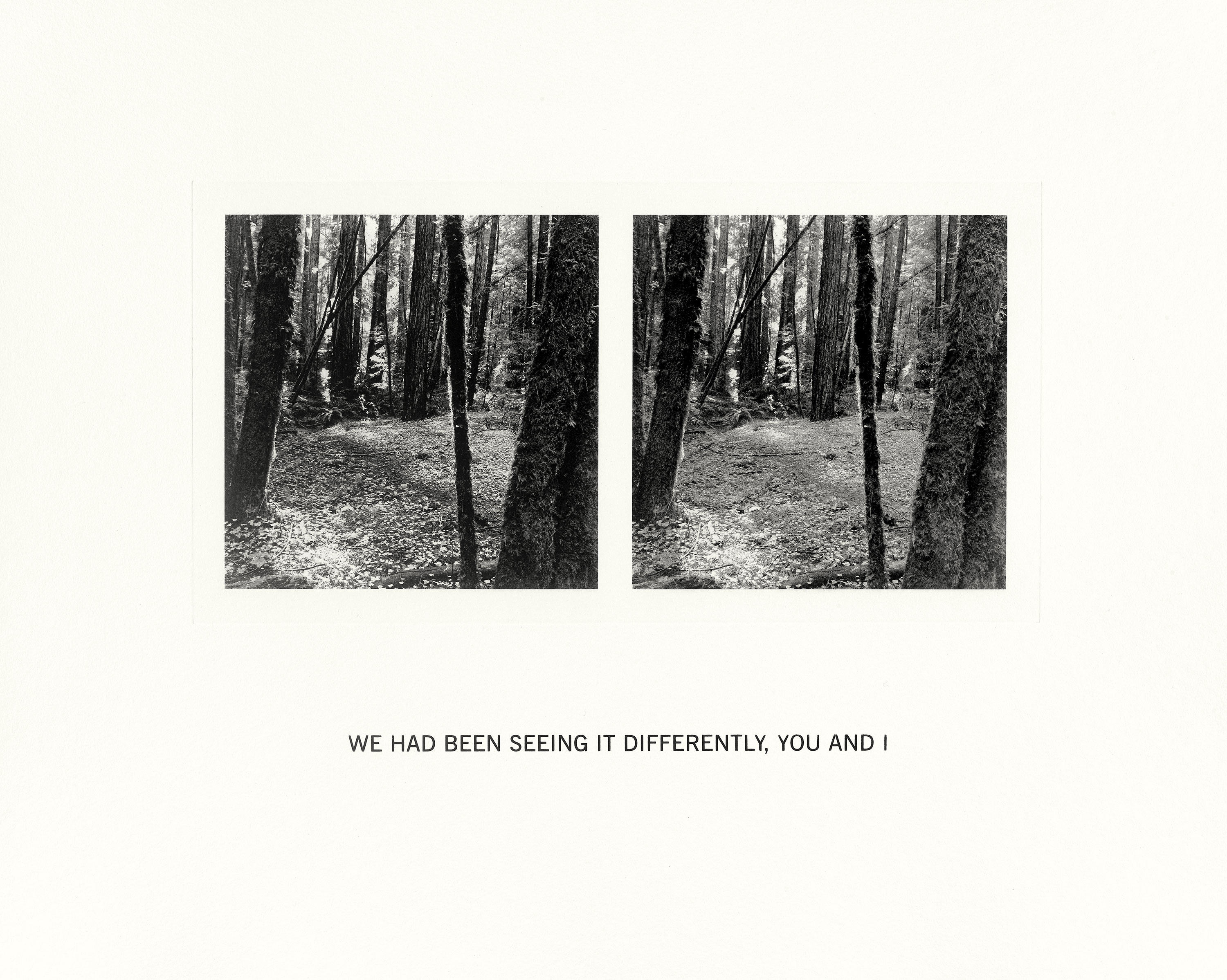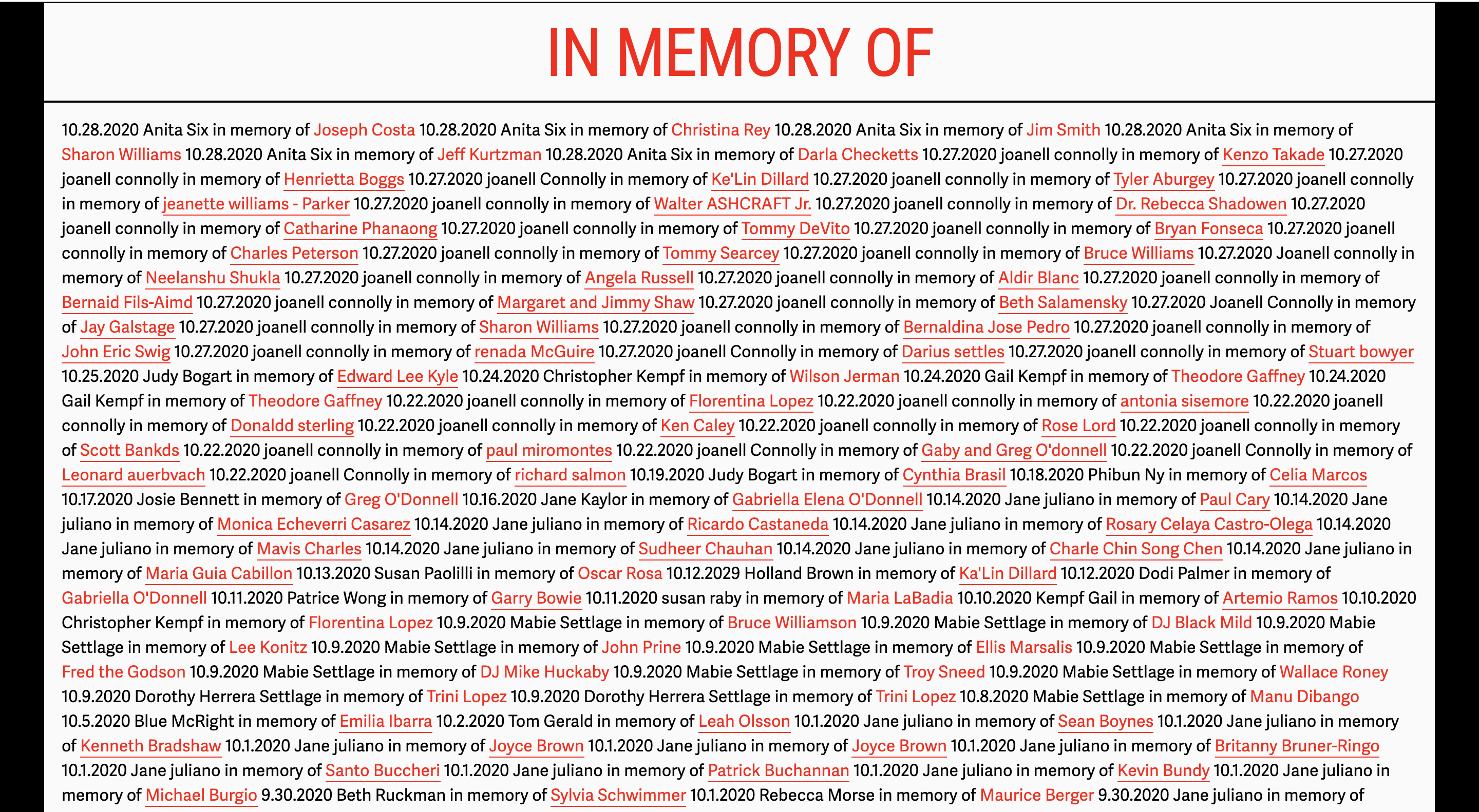The Waning of Discernment: Susan Silton discusses Type Specimens
by Adriana Widdoes
Susan Silton is a Los Angeles-based artist whose interdisciplinary projects respond to the complexities of subjectivity in a given moment — often through poetic combinations of humor, discomfort, subterfuge, and unabashed beauty. These works take form in performance, participatory projects, photography, video, installation, text/audio, and print-based works. She speaks here about Type Specimens, a limited-edition serigraph print produced in the pre-pandemic days of early 2020 for East of Borneo.
East of Borneo: Much of your work is conceived as a direct response to current events. I’m thinking specifically about your MAYDAY! MAYDAY! MAYDAY! project, which calls people to mail the name of someone who has died of COVID-19 to Donald Trump at the White House. What were you thinking about when Type Specimens came into being?
Susan Silton: The first iteration of Type Specimens was printed in 2017 on newsprint as an endless, take-away edition. But this phrase, “The Waning of Discernment,” continues to haunt me, which led to the serigraph edition published by East of Borneo earlier in the year. I’d been feeling anxious then (as now) about observing the ramped up spread of misinformation and its proliferation across media. I found it increasingly difficult (even more so now) to sift through all of it, to discern facts from fiction. Even misinformation that I wish were true is harder to discern. In the early days of the pandemic, I remember feeling exhilarated reading about dolphins seen returning to the canals in Venice, Italy as a result of lockdowns, only to read soon after in National Geographic that “Fake animal news abounds on social media as coronavirus upends life.” Collectively we’re experiencing propaganda and conspiracy theories swirling all around us on a daily basis, so this piece remains timely.
EOB: On a related note, Type Specimens was produced at the very beginning of 2020, before COVID-19 hit the U.S., if you can believe there was ever a time. Are you thinking of the work differently now that it exists within the context of the global pandemic?
SS: I don’t regard the pandemic as having any more or less of an impact on the ideas that first inspired the work. But during this time I’ve more strongly felt an advance towards parallel and completely divided realities in the U.S. It’s as if the bubbles are congealing.
EOB: A lot of your work plays with public space or print in some way — often times both. What compels you to work within these contexts? Do you see a relationship between the two?
SS: I utilize public space when a given project makes sense in that context. Same thing with print. More generally, both offer greater access and can potentially reach more people.
EOB: You seem to also be drawing connections between language, media, and power through Type Specimens. Can you talk more about that? I’m particularly interested to know about your choice of text and fonts, and whether they’re sourced from anywhere.
SS: In graphic design vernacular, type specimens are phrases that function to illustrate a given typeface. There’s a pangram, “The quick brown fox jumps over the lazy dog,” which is an example of a phrase commonly used for this purpose in English because it contains all of the letters of the English alphabet. Type Specimens plays on that design vernacular but makes a direct connection between the phrase (and all that the phrase suggests) and the twelve fonts, or a best approximation of them, used by twelve media outlets in their mastheads. I’m not making a judgment about any one of these news sources, I’m simply commenting on how they — along, of course, with social media — collectively contribute to the waning of discernment.
EOB: There’s a similarity in the repetition at play in Type Specimens and one of your most recent works — the suite of etchings that contain the phrase “WE SEE IT DIFFERENTLY, YOU AND I,” in which you pair two images of a forest scene shot at the same time but with a different filter. This idea of multiple truths, and the subjectivity of facts, has also been a recurring theme in the age of “fake news” media. What do you think the multiplicity and repetition in your work is activating?
SS: These works have different intentions. The intaglio print edition, which is called WE, engages the messiness of subjective observation through pairings of the same subject. In this case multiplicity/repetition — of the images and also of the phrase silkscreened below each pair — activates difference. The repetition of one phrase in Type Specimens, through twelve different mastheads, activates intersection. Those of us immersed in a politics of identity have always attempted to transcend the confines of classification through multiplicity. But I’m having a hard time these days coping with “multiple truths,” especially as that applies to journalism. Nuance, which I’ve often relied on in my work, feels like a thing of the past, when facts could be agreed on, but one could still discuss subtleties.
EOB: Art, like journalism, is also a sort of documentation of our contexts — political and social. With the rise of distrust in the media, where on the spectrum do you think art falls in relation to public trust?
SS: I don’t see an equivalency between journalism and art, so I think distrust of the media (reasons for which are pretty obvious) and possible reasons for distrust in art aren’t related. And, just to say that vis a vis documenting “contexts,” some artists’ work responds more to current time periods than others. Regardless, art thankfully isn’t held up as an arbiter of “truth” — we don’t expect art to be a dialogue between fact and fiction. Where trust comes into play in the art world, I think, has had much to do with public funding for the arts, which flourished during the New Deal, but since then has steadily declined. Accompanying opposition to funding for the arts is usually uninformed judgment and conditions about what art should or shouldn’t look like and its purpose. This kind of political theater is how publics begin to question art or its value, or lose trust in it — through propaganda campaigns designed to eliminate public funding for art. More specifically within the art world, though massive influx of private capital in recent decades — and concomitant greed — has led not so much to declining trust, but certainly a waning of discernment, of a kind — but I regard this as having more to with a waning of criticality in general.
EOB: What are you hopeful for in the coming months/years? In art and in the world.
SS: I’ll get back to you on that.
Type Specimens is available from our web store. Each print comes signed and numbered by the artist. For more information on how to participate in the COVID-19 LIVING MEMORIAL/MAIL ART PROJECT/PROTEST MAYDAY! MAYDAY! MAYDAY!, visit the website here.
